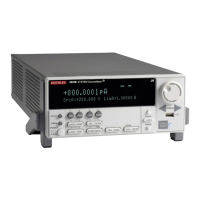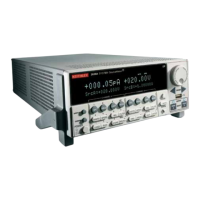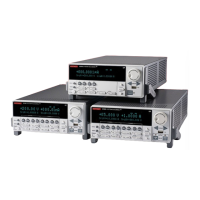4: Theory of operation Series 2600B System SourceMeter® Instrument
4-14 2600BS-901-01 Rev. B / May 2013
Load considerations (I-source)
The boundaries within which the System SourceMeter
®
instrument operates depend on the load
(device-under-test (DUT)) that is connected to its output. The following figure shows operation
examples for resistive loads that are 50 Ω and 200 Ω, respectively. For these examples, the System
SourceMeter instrument is programmed to source 100 mA and limit voltage (10 V). In addition, for A:
Normal I-source operation and C: I-source operation in power compliance, the System
SourceMeter instrument is programmed to limit power (600 mW).
In the following figure's first graph (labeled "A: Normal I-source operation"), the System SourceMeter
instrument is sourcing 100 mA to the 50 Ω load and subsequently measures 5 V. As shown, the load
line for 50 Ω intersects the 100 mA current source line at 5 V. The voltage compliance limit and the
power compliance limit are not reached (the instrument is not limited through its compliance settings).
The second graph in the figure (labeled "B: I-source operation in voltage compliance"), shows what
happens if the resistance of the load is increased to 200 Ω. The DUT load line for 200 Ω intersects
the voltage compliance limit line placing the System SourceMeter instrument in voltage compliance.
In compliance, the System SourceMeter instrument will not be able to source its programmed current
(100 mA). For the 200 Ω DUT, the System SourceMeter instrument will only output 50 mA (at the
10 V limit).
Notice that as resistance increases, the slope of the DUT load line increases. As resistance increases
and approaches infinity (open output), the System SourceMeter instrument will source virtually 0 mA
at 10 V. Conversely, as resistance decreases, the slope of the DUT load line decreases. At zero
resistance (shorted output), the System SourceMeter instrument will source 100 mA at virtually 0 V.
The third graph in the figure (labeled "C: I-source operation in power compliance"), shows what
happens if a power limit of 600 mW is applied. As the instrument attempts to output the programmed
source value of 100 mA, the power limited voltage compliance limit line is reached placing the System
SourceMeter instrument in power compliance. The System SourceMeter instrument enforces the
power compliance limit by setting the voltage compliance limit line to the new power limited voltage
compliance limit line setting (which in this case is 6 V). In compliance, the System SourceMeter
instrument will not be able to source its programmed current (100 mA). For the 200 Ω DUT, the
System SourceMeter instrument will only output 30 mA (at the 6 V limit). In this example, voltage will
never exceed the programmed compliance of 10 V, or the programmed power compliance of
600 mW, under any load.
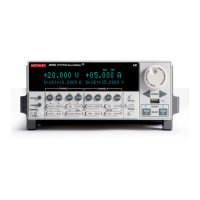
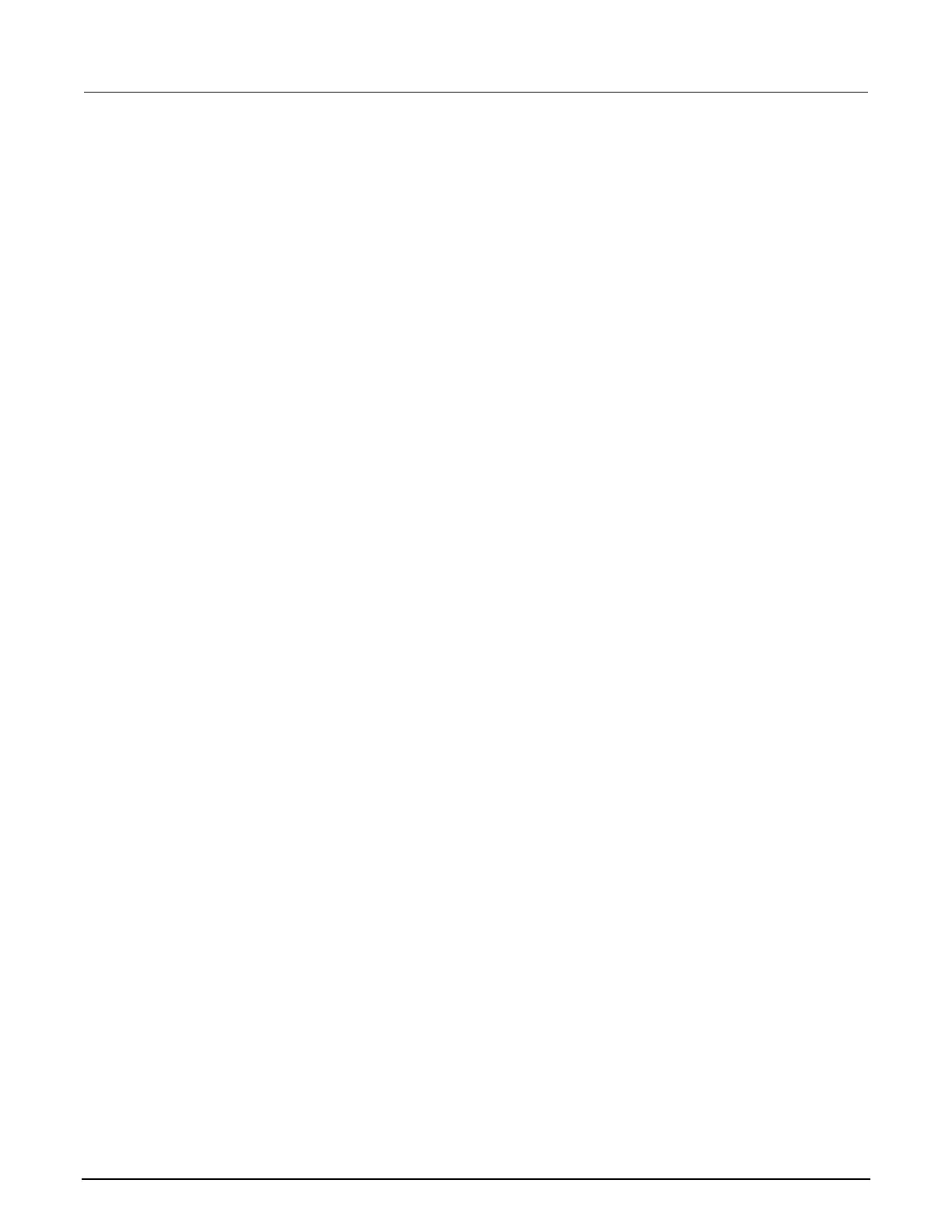